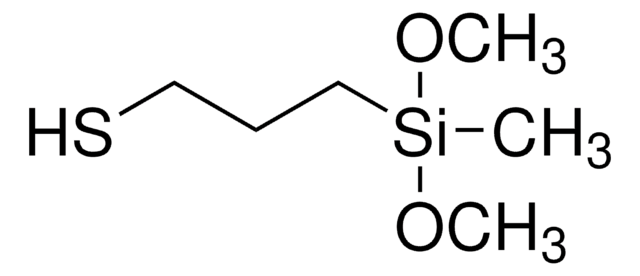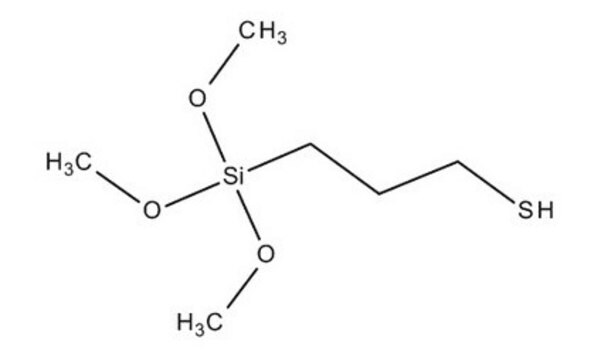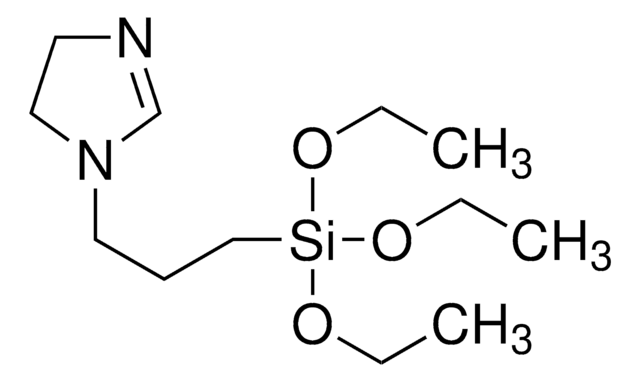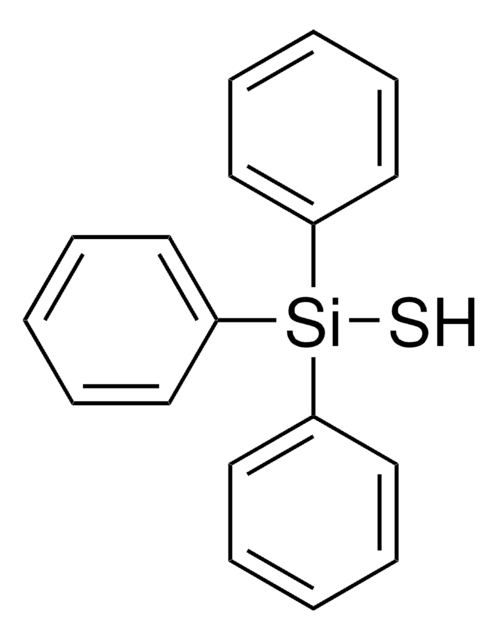63797
(3-Mercaptopropyl)triethoxysilane
≥80% (GC), technical
Synonyme(s) :
3-Triethoxysilyl-1-propanethiol
About This Item
Produits recommandés
Qualité
technical
Niveau de qualité
Pureté
≥80% (GC)
Densité
0.987 g/mL at 20 °C (lit.)
Température de stockage
2-8°C
Chaîne SMILES
CCO[Si](CCCS)(OCC)OCC
InChI
1S/C9H22O3SSi/c1-4-10-14(11-5-2,12-6-3)9-7-8-13/h13H,4-9H2,1-3H3
Clé InChI
DCQBZYNUSLHVJC-UHFFFAOYSA-N
Catégories apparentées
Description générale
Application
MPTS functionalized SBA-15 probe is used to determine dissolved mercury in solution.
Mentions de danger
Conseils de prudence
Classification des risques
Aquatic Chronic 2
Code de la classe de stockage
10 - Combustible liquids
Classe de danger pour l'eau (WGK)
WGK 3
Point d'éclair (°F)
190.4 °F - closed cup
Point d'éclair (°C)
88 °C - closed cup
Équipement de protection individuelle
Eyeshields, Gloves, type ABEK (EN14387) respirator filter
Certificats d'analyse (COA)
Recherchez un Certificats d'analyse (COA) en saisissant le numéro de lot du produit. Les numéros de lot figurent sur l'étiquette du produit après les mots "Lot" ou "Batch".
Déjà en possession de ce produit ?
Retrouvez la documentation relative aux produits que vous avez récemment achetés dans la Bibliothèque de documents.
Les clients ont également consulté
Notre équipe de scientifiques dispose d'une expérience dans tous les secteurs de la recherche, notamment en sciences de la vie, science des matériaux, synthèse chimique, chromatographie, analyse et dans de nombreux autres domaines..
Contacter notre Service technique



![Bis[3-(triethoxysilyl)propyl] tetrasulfide technical, ≥90% (NMR)](/deepweb/assets/sigmaaldrich/product/structures/242/790/625f5cba-32bd-4acf-a3be-e119e9cf844f/640/625f5cba-32bd-4acf-a3be-e119e9cf844f.png)









![N-[3-(Trimethoxysilyl)propyl]ethylenediamine 97%](/deepweb/assets/sigmaaldrich/product/structures/149/508/f87a9a89-f138-4c5e-9fe0-6561914241c3/640/f87a9a89-f138-4c5e-9fe0-6561914241c3.png)
